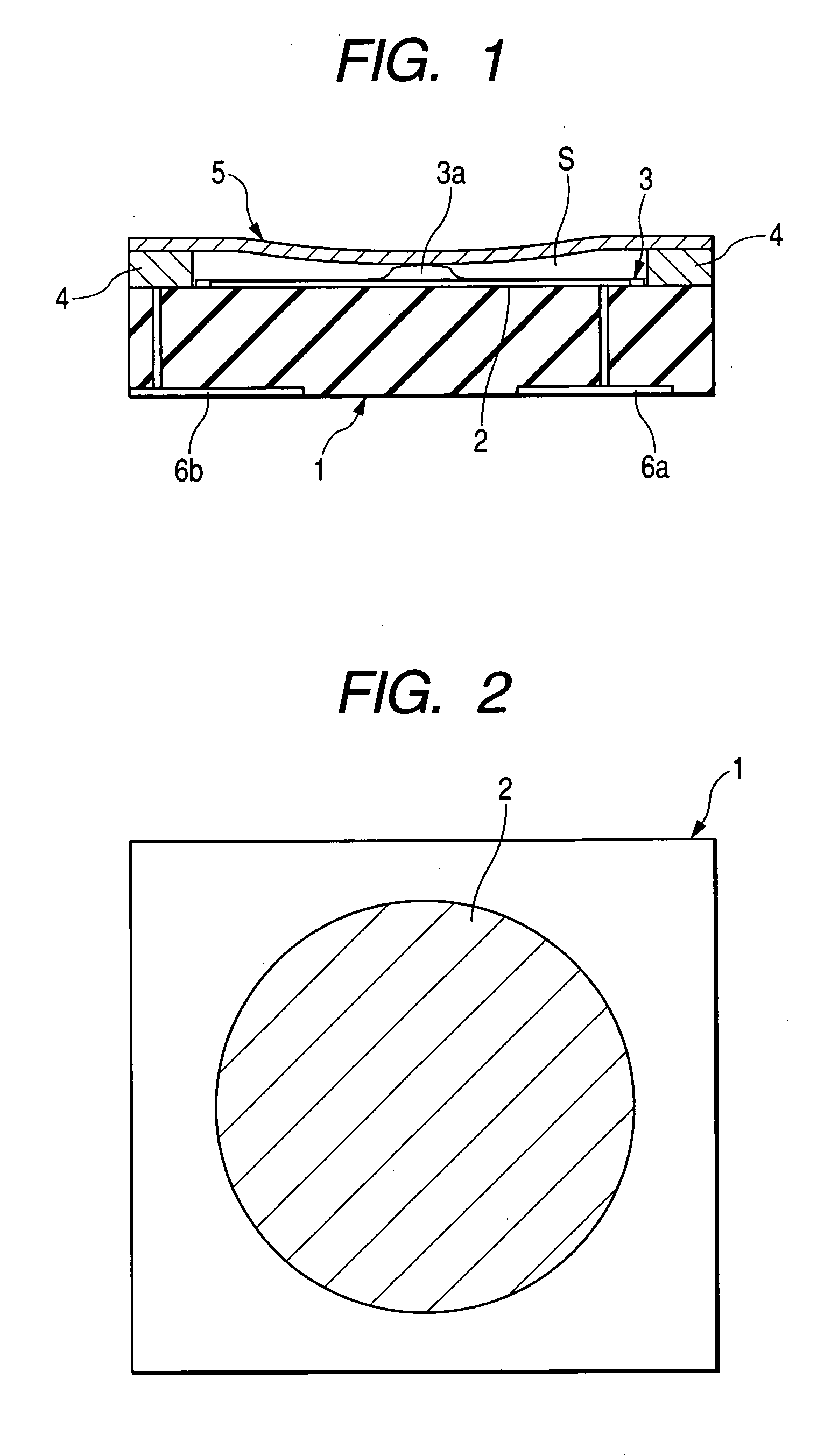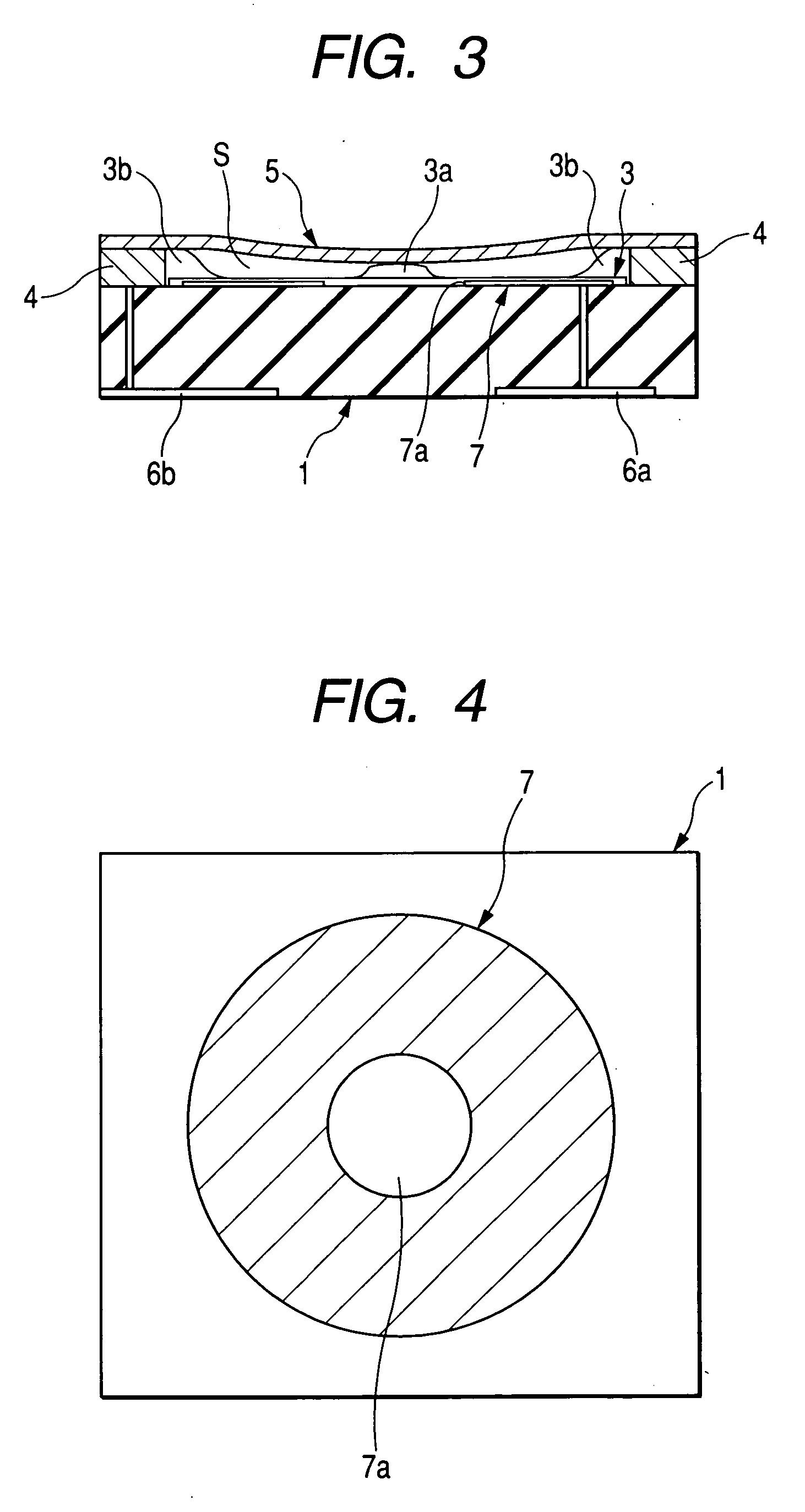Pressure sensor for detecting pressure by using capacitance variation according to deflection of diaphragm
a technology of capacitance variation and pressure sensor, which is applied in the direction of fluid pressure measurement using capacitance variation, fluid pressure measurement using elastically deformable gauges, instruments, etc., can solve the problem of limited capacitance lowering, the inability to reduce the capacitance to the initial measurement pressure, and the difficulty of increasing the variation amount in the measured range. , to achieve the effect of reducing the capacitance, increasing the distance between the fixed electrode and the portion of the dia
- Summary
- Abstract
- Description
- Claims
- Application Information
AI Technical Summary
Benefits of technology
Problems solved by technology
Method used
Image
Examples
second embodiment
[0049]FIGS. 3 and 4 show the present invention.
[0050] In the present embodiment, the structure of the fixed electrode is partially different from that of the first embodiment. The same components as those of the first embodiment are denoted by the same reference numerals, and the detailed description thereof will be omitted.
[0051] In other words, the structure of the present embodiment is the same as that of the first embodiment in that the upwardly protruding protrusion 3a is formed at a position which is almost at the center of the fixed electrode. However, the fixed electrode 7 of the present embodiment is formed at the center thereof with a cutout portion 7a with respect to a portion with which the diaphragm comes in contact, as shown in FIG. 4. Further, the insulating layer 3 is also formed within the cutout portion 7a, and the protrusion 3a is formed above the cutout portion 7a.
[0052] As described above, in the present embodiment, since the cutout portion 7a is formed at the...
third embodiment
[0054]FIGS. 5 and 6 show the present invention.
[0055] In the present embodiment, the structure of the cutout portion formed at the fixed electrode is partially different from that of the second embodiment. The same components as those of the first and second embodiments are denoted by the same reference numerals, and the detailed description thereof is omitted.
[0056] In other words, the structure of the present embodiment is the same as those of the first and second embodiments in that the upwardly protruding protrusion 3a is formed at a position which is almost at the center of the fixed electrode. However, the fixed electrode 8 of the present embodiment is formed at the center thereof with a cutout portion 8a having a star-shaped through-hole having a plurality of sharpened portions provided radially from the center toward the periphery, with respect to a portion with which the diaphragm 5 comes in contact, as shown in FIG. 6. Further, the insulating layer 3 is formed within the ...
PUM
 Login to View More
Login to View More Abstract
Description
Claims
Application Information
 Login to View More
Login to View More - R&D
- Intellectual Property
- Life Sciences
- Materials
- Tech Scout
- Unparalleled Data Quality
- Higher Quality Content
- 60% Fewer Hallucinations
Browse by: Latest US Patents, China's latest patents, Technical Efficacy Thesaurus, Application Domain, Technology Topic, Popular Technical Reports.
© 2025 PatSnap. All rights reserved.Legal|Privacy policy|Modern Slavery Act Transparency Statement|Sitemap|About US| Contact US: help@patsnap.com



